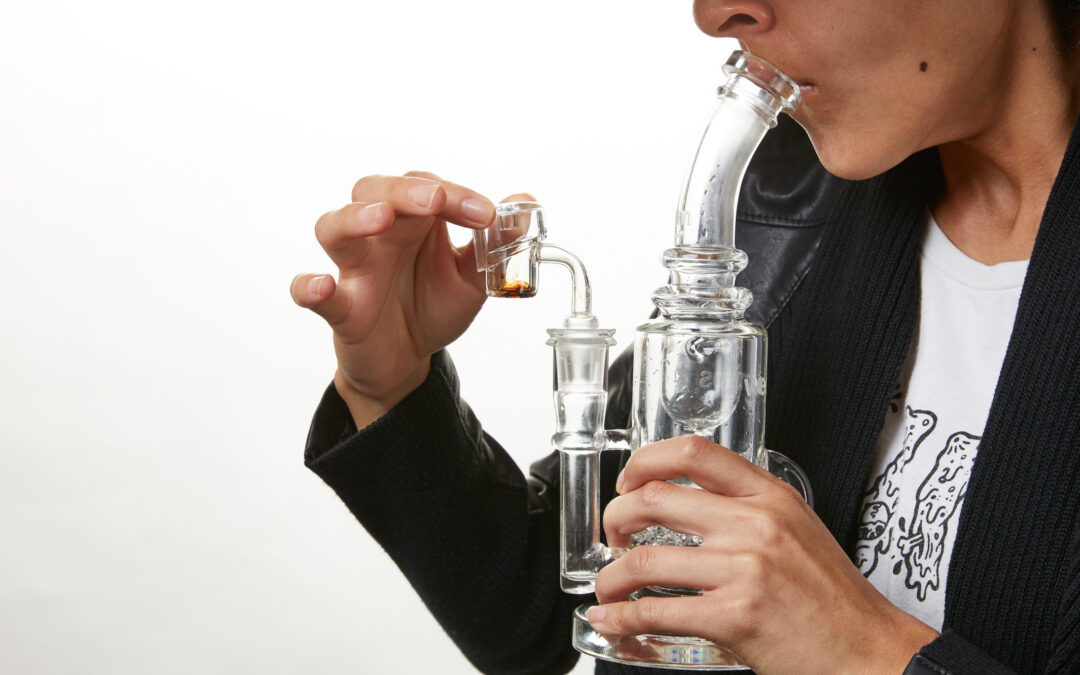Black or White? The Myth vs Reality of Cannabis Ash Colour
We have all heard it: Black ash is indicative of poor quality. However, is this really the case? Is this the truth, or is it another old wives’ tale passed on through smoking generations?
The common concern in the Cannabis community seems to be that the darker the ash colour, the worse the product quality is. Some common notions surrounding this idea are:
- A lack of proper “flushing” technique before harvest
- Too much moisture in the actual buds
- Use of fertilizers leading to traces of heavy minerals
- Issues during the curing process; no cure or too little cure time. Curing in glass vs plastic etc.
The term “Flushing” refers to watering your plants without any added nutrients for a period — anywhere from a day or two to a week or more, depending on your growing medium — prior to harvesting.
There is a consensus on what constitutes “flushing”: Hydroponics growers typically flush 10 days before harvest for example. However more important are the PH levels the plants are maintained at. For instance, the soil should be at a PH level of 6.0 – 6.8 and hydroponic growth should be 5.5 – 6.5 PH for optimal nutrient uptake and even distribution of nutrients to the entire plant.
Why does this matter?
flushed cannabis plants which are rushed will not combust properly. So, what does the research say?
According to Dr Robert Flannery, flushing is found to be “ineffective in removing any significant amount of nutrient from the bud” (“the cannabis growers Handbook “). Unfortunately, there has been a lack of double-blind studies to test the efficacy of flushing. Although most growers and consumers agree they can taste the difference if bud is not flushed enough.
Moisture content seems to play the biggest role in the ash colour and combustion of the material.
Many people are wondering if black ash is contributed to by moisture levels and the result of too much water content. Laboratories agree and research currently points to black ash being a sign of incomplete combustion. Wurzer et al. at SC Labs state that the potential reasoning behind this could be too much moisture in the flower itself, poorly rolled joints, and resinous flowers.
What about the method of combustion? Joint vs bong or pipe? Type of paper used. What about lighter vs torch and the effect of temperature?
Method of combustion does indeed have a role to play in ash colour. Low-grade and poorly manufactured rolling papers do affect ash colour due to chemical compounds in the glue and papers themselves. Joints and blunts tend to heat and burn the materials around it vaporizing both the resin and the moisture inside the bud simultaneously. These are two of the major contributors to inefficient combustion. Airflow is also more optimized for a joint than for a bong or bowl. When burning in a pipe, the ash is often a lot darker than with a joint. This is due to the temperature of the combustion taking place. Lower temperatures and keeping a consistent and even temperature greatly affect how combustion takes place.
Temperatures lower than 450 c create dark ash as the combustion is incomplete. Organic compounds are still present in the ash, alongside trace amounts of carbon. However, temperatures greater than 450 c led to a light ash colour. This is due to volatilized carbon and mineral ash left behind. It’s also fair to note that the average lighter can combust at temperatures around 1000 c. So, ash colour is indicative of full or partial combustion.
While there may not be a lot of research on the ash colour produced by cannabis after combustion, tobacco companies have studied ash colour in tobacco for over 100 years.
“Chlorides intercept in the complete burning, or combustion of the product, which then causes the taste and smell to weaken” (Henry R. Kraybill July 1917). During combustion, components such as potassium salts of organic acids showed up, aiding in the maintenance, and holding of the fire. The essential parts of the compounds were found to slow the combustion process.
Further, a study on the effects of fertilizers on smoke and ash found that “the type of fertilizer did not alter the cured leaves’ alkali composition, nor did it increase the sulphur levels”. This means that studies found that Chlorophyll levels played a huge role in the quality of product, taste, and combustibility.
High amounts of Chlorophyll lead to poor-quality products, that do not burn clean (if at all)
Going back to tobacco studies, a lot of research into how to achieve white ash has been released.
To achieve the white ash found in tobacco often nitrates, carbonate magnesium or calcium acids are added creating alkaline metal oxide (and white ash colour). With this said, white ash in tobacco is caused by chemical reactions and additives. (Vs a measure of purity)
The studies found that white ash is created under 2 specific scenarios:
- High combustion temperatures
- Produced mainly by minerals added to improve ash colour.
One other factor which affects the ash quality and colour is the actual curing process (or lack of it). Curing promotes the proper development of cannabinoids and terpenes.
Proper storage in air-tight sterilized glass jars, in a cool dark space for 10 days to 2 weeks appears to be the standard practice. The process of “burping” jars leads to mold prevention and proper monitoring of humidity levels.
Achieving the perfect humidity inside cannabis buds is essential to a proper cure, and prevention of spoilage. During this curing process, levels of Chlorophyll are significantly diminished.
Well-cured cannabis affects the quality of taste, smell, and combustion due to the moisture content which provides a smoother more enjoyable smoke.
Unfortunately, all cures are not created equal (with some growers skipping this necessary step and rushing the product to market). The curing process does not only control humidity but rather preserves and matures Terpene levels.
To conclude, ash colour is indicative of moisture levels (too high) and the temperature in which the combustion of the materials occurs. One can argue based on the research available, that there are too many factors involved in something so simple being used to measure the overall quality of the product.
More studies need to be conducted in the future. However, the current knowledge points to black ash not being indicative of improper flush or trace mineral amounts being left behind. Current research holds that the curing process of removing chlorophyll and moisture is the most important step in reducing ash colour.
If it tastes and smells good, does it really matter? What do you think? – Candy

References:
“Plant and Cell Physiology”, Vol 33, Issue 8, December 1992
“Whiteness of Cigarette Ash”, Isao Kanai (1960) , Journal of Agricultural Chemical Society of Japan. 24:4, 405-412.
“Temperature Effects on the Ash Colour of Forest Litter”. Jolita Dudaite et al. University of Barcelona (2011) 3(5) 18-23
“Irrigation Management Strategies for Medical Cannabis in Controlled Environments” – Johnathan Stemeroff
“Composition and Quality of Pennsylvania Cigar Leaf Tobacco as Related to Fertilizer Treatment”. D.E . Haley, J. B. Longenecker, Otto Olsen
“Effect of some Alcohol salts upon fire-holding capacity of tobacco”. Henry R. Kraybill July 1917
“The Cannabis Growers Handbook” Dr Robert Flannery


